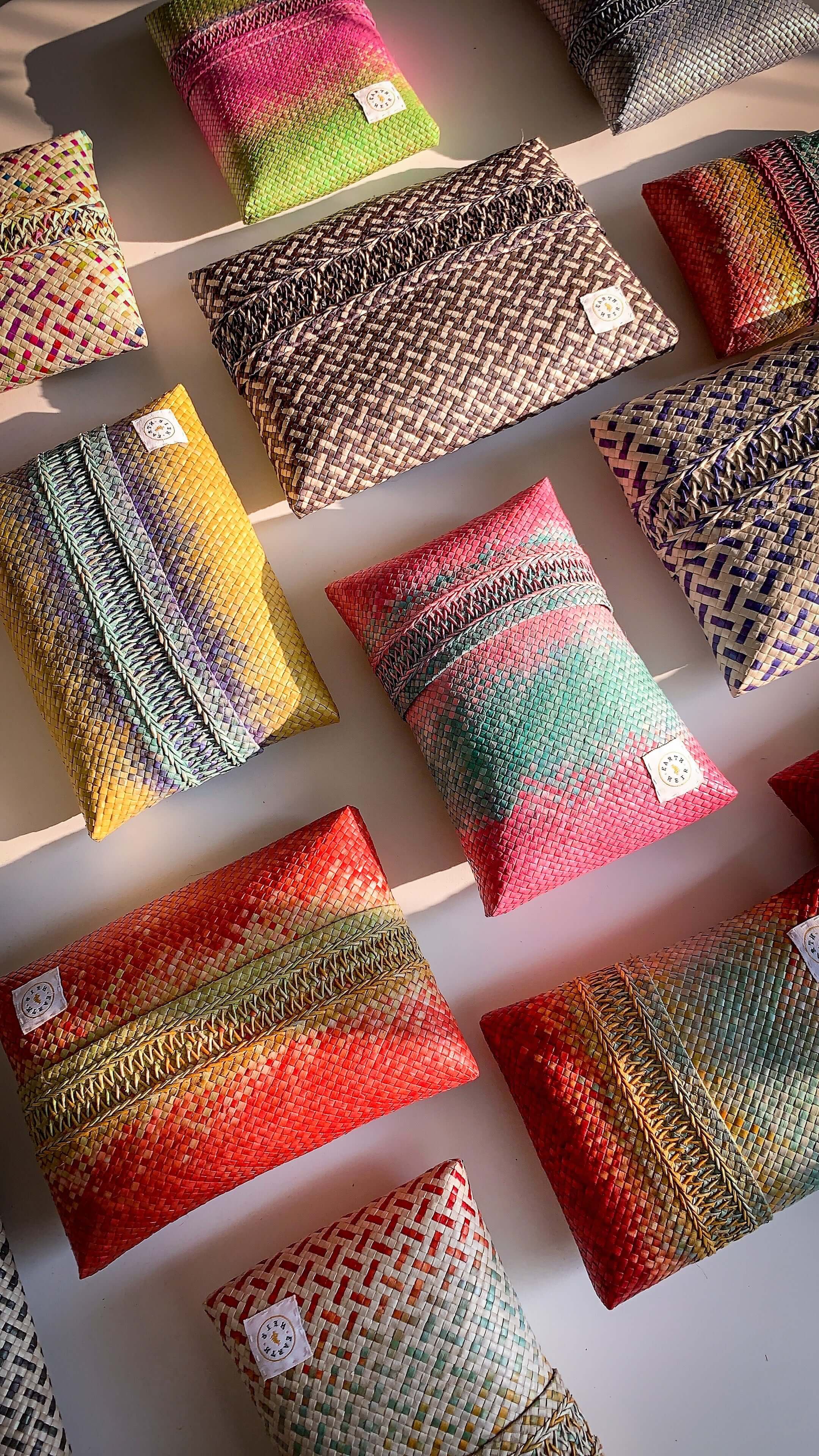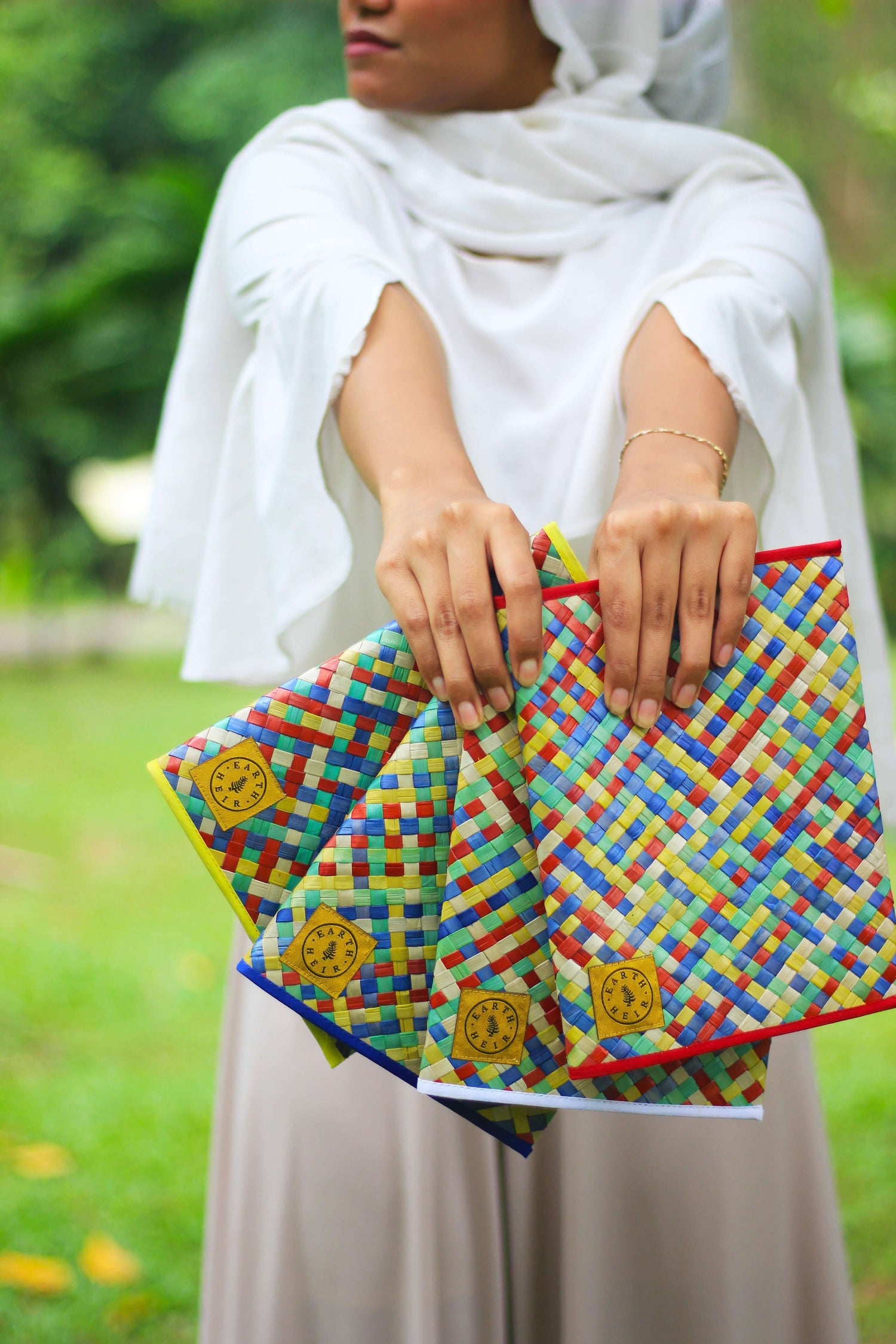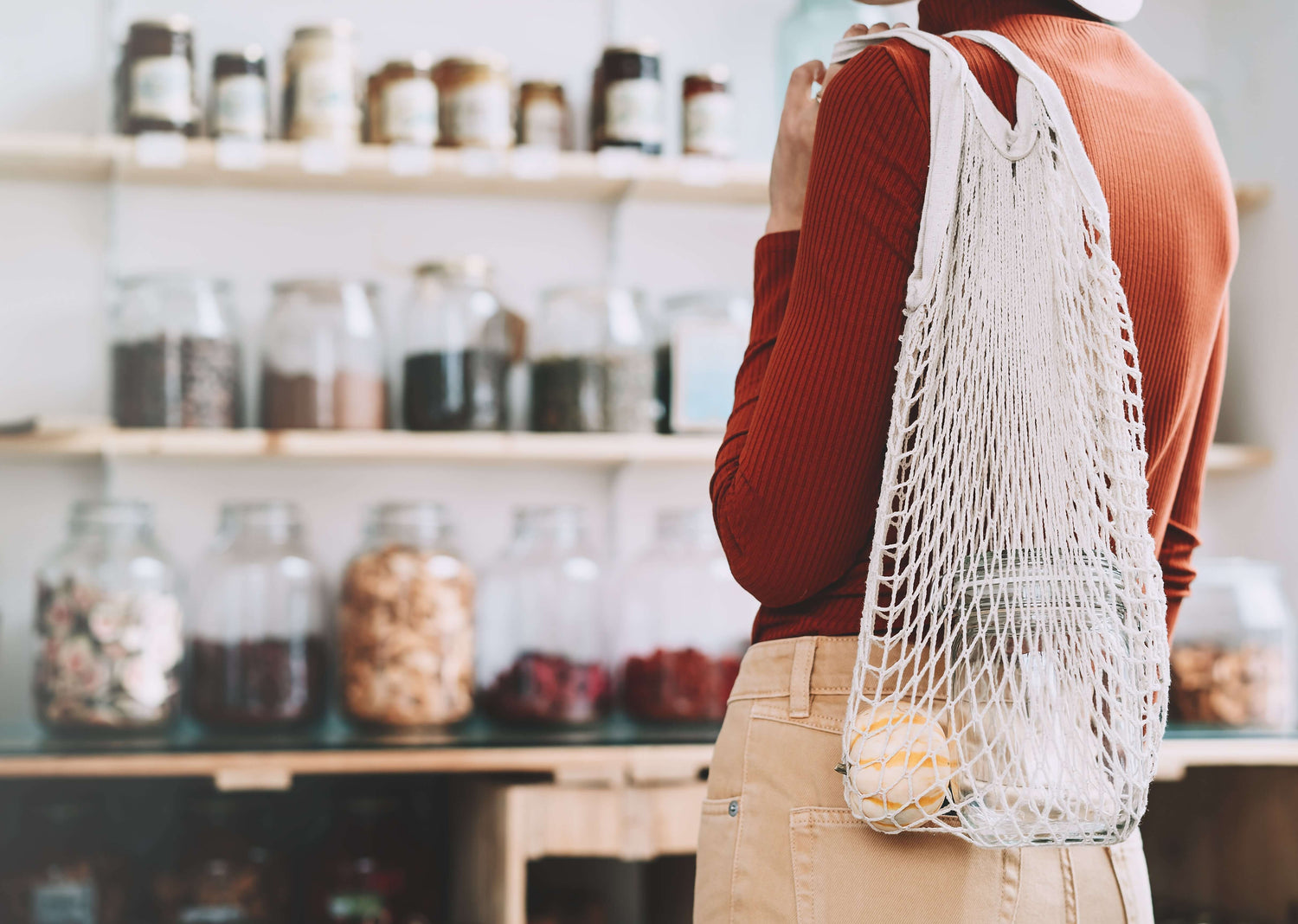The art of mengkuang weaving goes back for generations. It is both a leisurely pastime, and also a thriving artisan activity in Malaysia. Ethical sourcing and sustainability are a priority for Earth Heir, and we want to make sure you know all about the historic process handed down and refined through the ages to bring you these beautiful, handcrafted pieces.
What Is Mengkuang?
Mengkuang is the Malay word for Screw Pine (Pandanus amaryllifolius) trees and shrubs that resemble palms. They are native to tropical countries with a variety of species across the regions. The plant also grows fruits that can be eaten. The leaves on the mengkuang have spiny thorns that have to be trimmed before being sliced into weavable sections.
It has become a versatile material for weaving because of its structure. The veins inside the leaves run parallel along the length of each leaf, making it stronger than most leaves. Older leaves are preferable for weaving mats (tikar), and younger leaves can be better for other products, like bags.

Where Does Mengkuang Come From?
The shrubs are typically found along coastal villages, but you’ll also find mengkuang at the edge of the local jungles of Malaysia. Some species of mengkuang are also considered household plants. Mengkuang is highly sustainable because regrowth occurs quickly on a medium-sized trunk. It likes humid, damp conditions and tends to grow best in areas with high amounts of rainfall. Sandy, well-draining soils are also ideal for this plant.
Mengkuang leaves (daun mengkuang) should never be harvested it when it’s too hot (as it can make the leaves brittle and difficult to process). Instead, you want to make sure to harvest mengkuang when it’s shady and cool. That’s when it is easiest to handle and most likely to take on the necessary characteristics to be woven into mats, bags, and other items.

How Is Mengkuang Used?
The leaves of the mengkuang plant are cut into strips to weave various items like bags, floor mats (tikar mengkuang), and even wall hangings. Malaysians have also used the leaves for thatching roofs. Leaves and roots are reduced to their individual parts, and the leaves are woven while the roots are deconstructed to reveal threads that can then be spun into rope. Other items produced from mengkuang include elegant clutches, home decor, containers, high-quality sleeping mats, cushions, slippers, passport covers, product packaging and picture frames.


How Is Mengkuang Processed?
Once harvested, the leaves are split from the leaf’s rib or spine and thorns are trimmed away while wearing gloves for safety. The leaves are then cut into strips. The thickness of the strips depends on what will be woven. Mats sometimes have thicker strands, while bags or wallets use thinner strips. The tool used to cut the strips is called a “jangka” in Malay.
There mengkuang gets processed in steps that involve fire and water. The leaves are flattened with a long piece of wood and then exposed to the heat of fire to be softened (melurut daun mengkuang). After the strips have been cut, the strips are bundled and soaked, and boiled in water to soften the leaves and make them more pliable. Boiling lasts for about an hour followed by a water bath for up to about 24 hours. Water is then squeezed from the leaves, and the leaves are hung in the sun to dry and to get bleached naturally, which takes about three days under the sun for bleaching and drying before they’re ready for dyeing and weaving.
Once the mengkuang leaves have been bleached as light as possible, it’s time to dye the strands. Traditional dyeing is done with colors derived from native vegetation and boiling the strips one more time. The strips will then be sorted by length and bundled in groups of several hundred strips. They are then hung to dry, and finally they are ready to begin the weaving process once they’re completely dry. Watch our video on the process here : How is Made? From Mengkuang Plant to Bag
What Happens During the Weaving Process?
Weaving patterns are often inspired by nature or are original creations that have been passed down over time. Sometimes, you’ll even see names for patterns that come from the people who created them. The weaving process is similar to the way friendship bracelets work, except you’re using leaves. For a simple weave, weavers do not use more than a couple of leaves to get started. They will weave in and out with each of the leaves in an intricate pattern. If they are recreating more complex patterns, they will count out the leaves and folds to make the pattern in addition to coordinating the colors you’ll see in the finished product.

Weaving can take anywhere from a few hours to several days or even weeks depending on the complexity and size of the project at hand. Since they are artfully created by hand, you may also notice differences in colour or texture, but that’s normal. When the leaves are dyed, they take on a variety of color variations adding to the natural beauty of every piece. To finish off edges, sometimes the weavers use a special needle connected to a thinner leaf strip and use it similarly to traditional sewing techniques (this is called the tulang belut technique in Malay, translated as ‘eel spine’ in English). The leaves can also be trimmed with scissors to achieve a uniform edge when the piece is complete.
Years of Dedication : The Art of Traditional Mengkuang Weaving (Tradisi Anyaman Mengkuang)
Learning the weaving process takes years, and sometimes decades, to learn and master. The art of mengkuang weaving is increasingly disappearing due to the years of dedication needed to master the skills of expert weaving. Meant to inspire calm and invoke nature, mengkuang products are a piece of Malaysian cultural heritage at risk of dissipating.
Given the time involved in preparing mengkuang leaves as well as the effort required in weaving these products, it’s not surprising that the weavers are also becoming fewer with every coming year. A mengkuang bag or a wallet is not simply another thing to own. It’s a work of art and inspiration skillfully handcrafted by an artisan who cares deeply about the craft that represents who they are and their traditions.

Where to Buy Mengkuang Gifts and Products?
Products made from mengkuang are a showcase of natural beauty, and worth every penny. If well taken care of, mengkuang can last many years. A tip is to dry it if it gets wet and keep it away from rain and direct sunlight. Since it is a natural fibre, it is fully biodegradable, and is a great representation of an eco and sustainable fibre.
When you own a mengkuang piece from Earth Heir, you’ll have a piece of Malaysian heritage and an excellent conversation piece! View our Mengkuang collection here.





